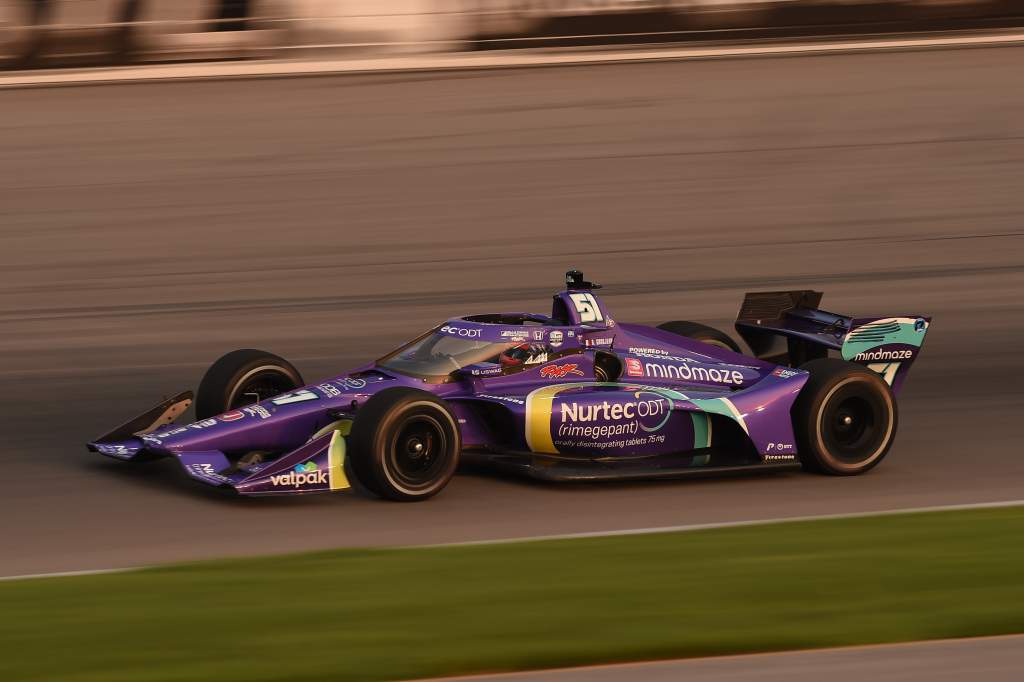Romain Grosjean is only two points behind Penske full-timer Scott McLaughlin in the battle for IndyCar rookie of the year, and if you extrapolate his average points per race score he should arguably be eighth in the overall standings.
If you’d have offered to Grosjean before 2021 that he would be scoring at a higher rate than the likes of Simon Pagenaud, Will Power and Alexander Rossi, I’m sure he’d have bitten your hand off. Never mind being way ahead of where that Dale Coyne car was last year, in the hands of the driver (Alex Palou) who is now leading the IndyCar championship with four rounds remaining.
In fact, Grosjean is only 32 points behind matching Palou’s 2020 points total with four races remaining, and is scoring 23 points per race on average.
It’s making his attitude to ovals even more important.
It’s clear for everyone to see that Grosjean could be a title threat over the course of a full title run, but he’s yet to commit to the idea of running the ovals next year.
This weekend will be the first taste of seeing Grosjean compete on an oval. Aside from enjoying the experience on the track, he and his family need to be sure they are happy off it with him taking on ovals.
Gateway is a small hurdle that is only the beginning given its relatively short lap and low speed compared to somewhere like Texas or Indianapolis.
What’s clear is how Grosjean interprets this weekend is a big part of one of two questions ahead of next year. In this case it’s ‘can he commit to running ovals and going full-time?’. The other, of course, will be which team he chooses to do that with if the answer to the first one is affirmative.
With the contextual importance of the weekend ahead laid out, The Race has delved back into its recent interviews with Grosjean and his engineer Olivier Boisson after their first oval test at Gateway last month, as well as highlighting some of the other challenges Grosjean faces and his thoughts going into this weekend.
The car ‘driving itself’
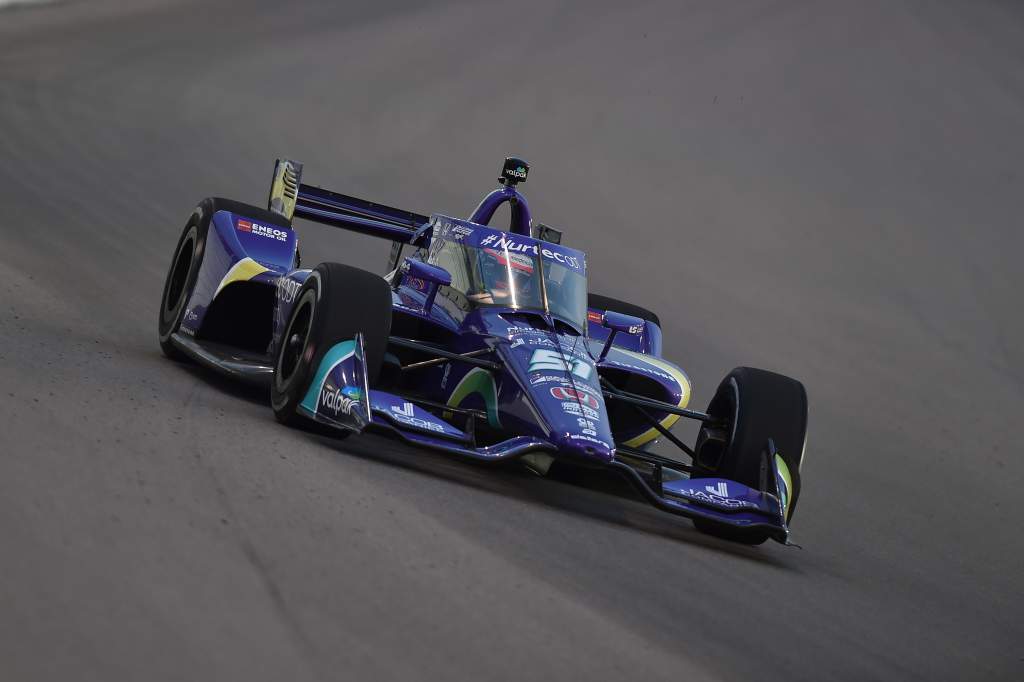
Driving on an oval is a totally alien feeling. Many drivers, including the likes of Nigel Mansell, have been amazed at how unusual an IndyCar feels in oval set-up, some even believing that the car has something wrong with it. Usually that’s not actually the case!
“Going on an oval, it was all brand new and a huge discovery for me,” Grosjean told The Race IndyCar Podcast following his Gateway test.
“When I jumped in IndyCar to learn the car, I [at least] knew that you had to brake late and go on throttle early in the corner to go fast. While on the oval I had no idea what to expect.
“You leave the pit and then the car doesn’t want to go straight, turns to the left on its own, and then your steering wheel is completely to the right on the straight.
“Everyone was telling me the car will drive itself. And what does that mean when you are a racecar driver?
“No, I drive the car, I force it to go in and out with my braking and my throttle and so on. So I didn’t really know what to expect.
“And then eventually, by the end of the day, I started to have that feeling where, yes, you decide the speed that you want to carry through the corner, but it’s almost you that follow the car rather than forcing it. Which is very, very different from everything we’ve done before.”
The actual art of driving the car on an oval sounds easy; be aggressive, turn left. But picking your line and entry, the speed at which to do it relative to your tyre wear, and at 150mph+ with another car inches away, the art of it starts to become a bit more appreciated.
Leaning on your engineer
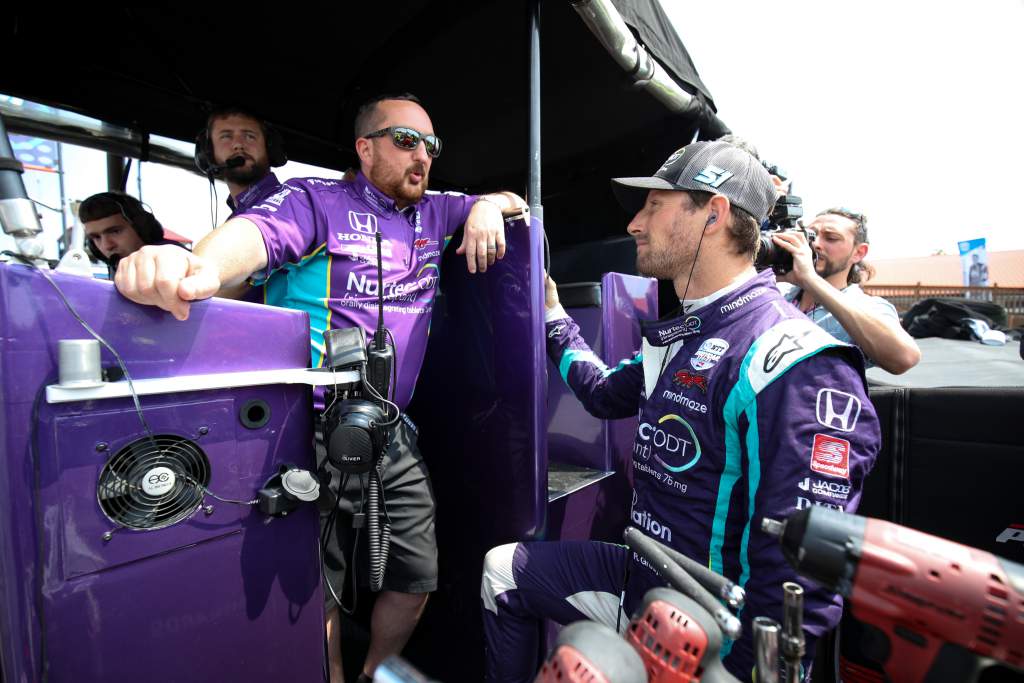
With Grosjean so new to ovals, he’s not going to know or be able to suggest small things to tweak on the car because he doesn’t have the experience yet to understand how those tweaks impact the sum of parts on an oval.
Therefore his right-hand man is going to be key.
“It’s really hard sometimes for people coming from Europe to understand how finicky and very… fine-tuning those ovals are,” says Grosjean’s engineer, Boisson.
“They might think ‘I’m going to be flat’ or whatever. On a shorter oval there’s a lot of driving. The car is very asymmetric so you when you adjust the car, we almost adjust like one tyre at a time, one corner at a time, not the whole axle on the whole car.
“So there’s a lot of little adjustments, and those adjustments do a lot more than maybe you feel on the road course because you spend a lot of time in steady state cornering.
“So for him [the test] was a great experience, he learned a lot about it, like when the car is good mid-corner the car just wants to drive in a circle by itself, you don’t have to push it in, it just wants to go and he liked that feeling.”
Luckily, Grosjean will have no problem trusting Boisson. Not only has the latter worked with ace drivers like Sebastien Bourdais in the past, he and Grosjean immediately established a rapport.
“It doesn’t happen all the time with every driver but, very lucky with, from the first day we met we got along very well and it’s been a very smooth and very good relationship,” Boisson adds.
“He trusts me and I trust him, I trust his feedback and he is very professional.”
Fighting dizziness
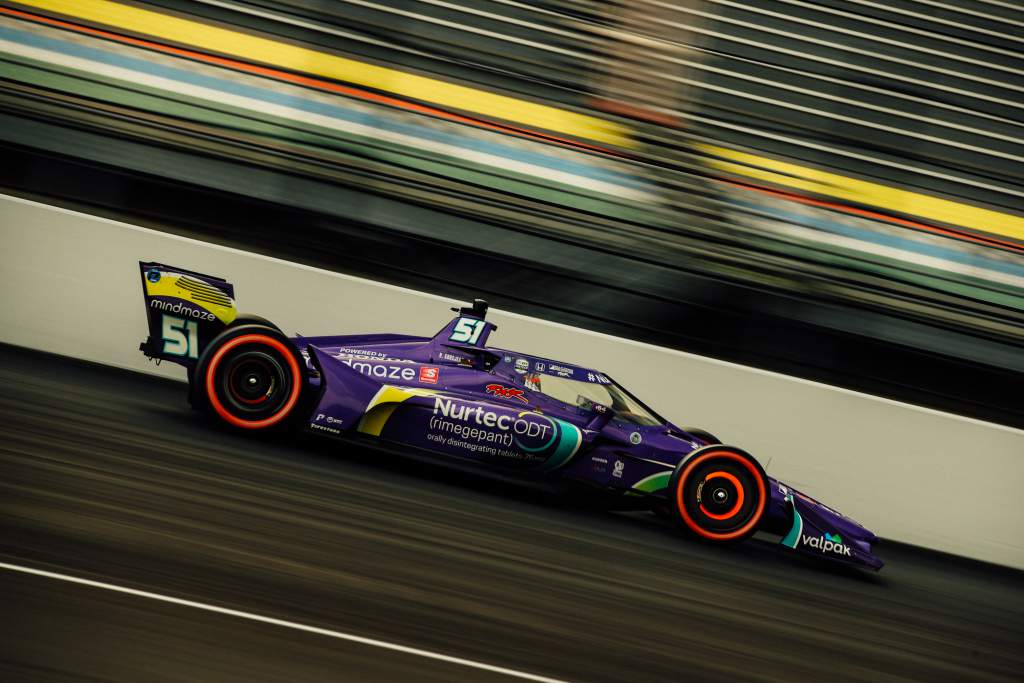
Grosjean is among the motorsport elite in that he’s an ex-F1 driver – recently removed – who takes the fitness side of his craft extremely seriously.
But even he acknowledged that driving on an oval with the forces involved is a different feeling to anything he is used to and poses a challenge, even if it appears he’s ‘just’ turning left 1040 times.
“One of the funny things is every time I jumped out of the car [in the test] I couldn’t stand up because I was so dizzy and my head was turning and they were all laughing at me, telling me it was normal for the first time, but it wasn’t good-looking when I was jumping out of the car,” he says.
“Physically it’s super different because it’s only turning left, so my right foot, the side of my right foot was hurting a little bit at the end of the day from being on the throttle pedal being pushed on the outside with the g-force.
“Same thing with your right elbow, normally on the road course my left elbow was getting smashed, but that time it was only the right one just because the g-force is going that way.”
After practice it’s very unlikely Grosjean will have any dizziness, but it’s important not to underestimate the physicality of an oval as a challenge.
Especially when rookies usually have more time to recover between sessions than Grosjean will get.
The added twists of a one-day event
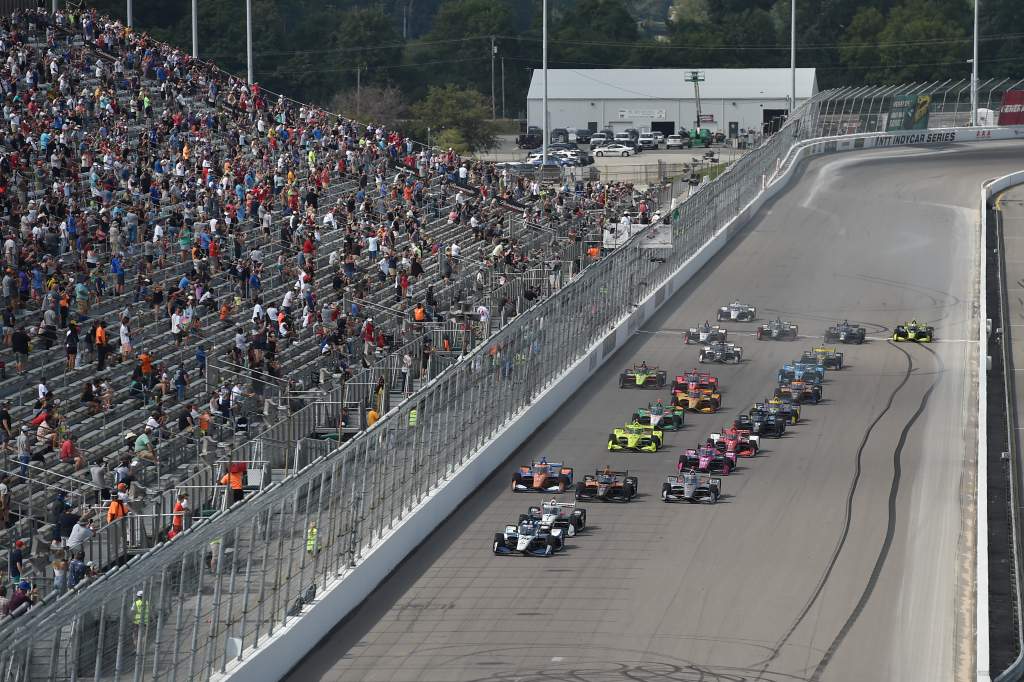
Like the IndyCar season opener last year, Gateway will happen over one day. That means practice, qualifying and a race within around nine hours.
That offers up multiple challenges. Firstly, a crash in practice may rule you out of qualifying – which happened at Texas last year to Takuma Sato – and crashing in qualifying might rule you out of the race.
No one would criticise Grosjean for crashing on his oval debut – it’s difficult. But if he wants to take part in all sessions and build up his experience level, he really needs to dial it back and not make any big errors.
“At Indy when we practice, you get a lot of traffic, you get kind of a feel for what’s going on,” says Conor Daly, who’s had success on short ovals in his career and has spoken to Grosjean about the Frenchman’s oval ambitions.
“Realistically there’s so little track time in Gateway, he’s going to be thrust into a very, very new situation.
“I think he’s been so good lately and so aggressive, on the podium, fighting for everything, it could be one of those situations now where it’s kind of like, ‘hey, let’s just do all the laps, figure this out’.
“Probably best to get experience. But again, he’s been good at everything he’s done so as far this year, might surprise some people. But ovals are hard. They’re way harder racing than people expect them to be.
“I’m excited for him, though. He’s pumped about it. He texted me as soon as they finished the Gateway test last time.”
Then there’s the fact that the condensed nature allows less time to trial car set-up changes or to evaluate data to improve. It’s going to be the longest-ever short day of racing for Grosjean.
Strategy
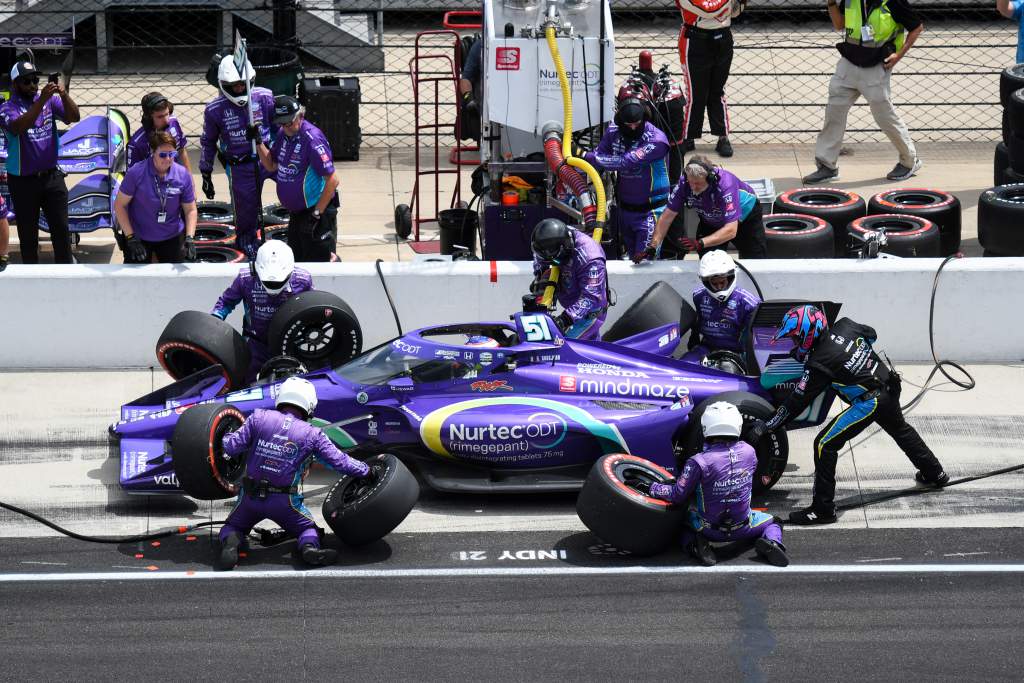
Because of the short lap and consequently short pitlane, you can lose a lap or two via coming in for service at Gateway.
The timing of cautions then can be crucial as if you’ve pitted just before one and go a lap or two down then whoever stays out effectively can get a free stop.
This makes ovals more complicated than the road or street courses Grosjean is used to. He’ll be reliant on his team identifying what the opposition are doing and modifying strategy accordingly.
He’ll also be hoping that his team delivers rapid stops – something it hasn’t always done this year – on pit road, as that is particularly important at Gateway.
Last year the undercut strategy, to benefit from fresh tyres and clean air, and the overcut, to take less fuel in a late stop for less time in the pits, were both popular.
Historically overtaking has been tricky at the oval due to its one-lane nature but if you’re willing to get aggressive, you can make overtakes stick and also the night-time race should make passing easier.
In the past, champions usually win this race, and it’s because it’s full of challenges that test even the most experienced IndyCar drivers and teams.
Using the tools
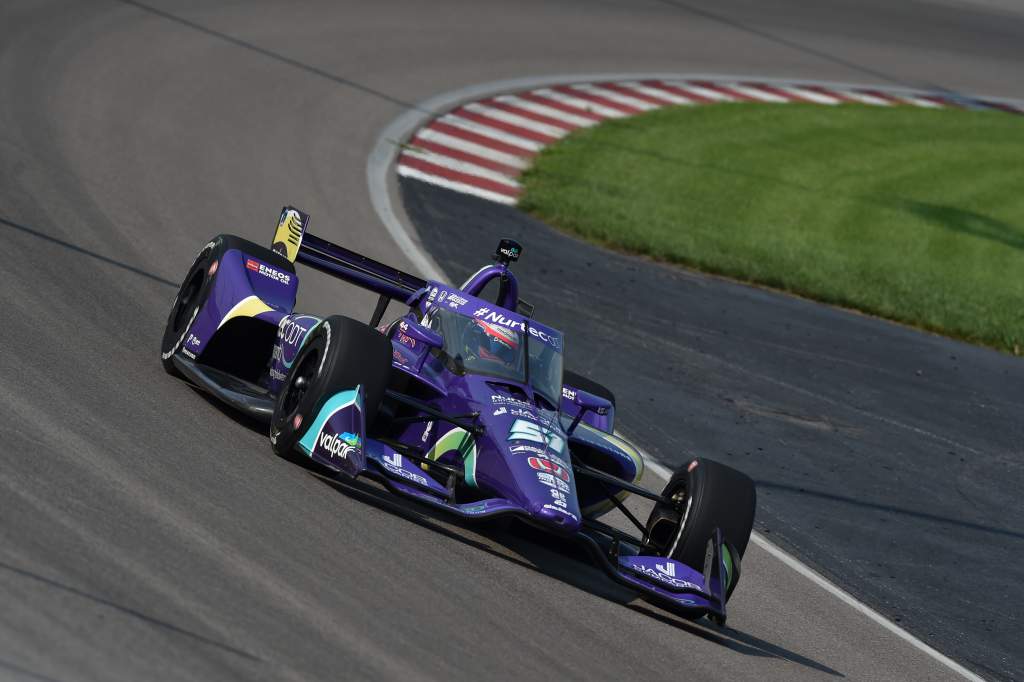
One of the things that will definitely be different for Grosjean from road and street courses is how he uses the ‘tools’ on the steering wheel to help with the car balance.
Shifting brake bias, weight from side to side and the anti-roll bar are all things a driver can do to improve performance on track but also to make the car easier to handle when entering/exiting the pits.
“There’s loads of things that you need to think of, playing with your tools, just stopping on your pit box because the car is so twisted that you do want to put like a softbar and weight jacker and you go again on track on cold tyres so the front bars go stiff again,” says Grosjean.
“You don’t want to have any oversteer. So it’s all routine stuff like that, that you need to be on top of.”
Grosjean probably won’t want to complicate his day by doing too much work on the steering wheel, but it could be vital for him to make the car behave.
Spotting and racecraft

Something new for Grosjean at Gateway will be oval racecraft, and having a spotter, which comes with it.
Obviously Grosjean has spent his whole career with a radio in his ear, but having a spotter is a whole new kettle of fish.
Daly – who will be a spotter in the NASCAR Truck Series for Ryan Truex this weekend as well as racing at Gateway in IndyCar for Carlin – doesn’t think there will be anything Grosjean can’t get used to.
“I don’t think honestly there will be any challenges,” said Daly when asked by The Race. “You get used to that pretty quickly.
“It’s something I think, when he makes moves, it’s different than making moves on road course, you know what I mean?
“If his spotter says there’s a car to your outside, I hope he believes them.
“Normally on a road course, there’s a car on my outside, I’m going to move that way anyway. There’s run-off, something going on there, you’re basically trying to play a game of who’s not going to lift.
“On ovals you can’t really do that.
“That’s kind of the one thing you have to get used to, respecting the lanes, figuring out who’s there, who’s actually still there.”
Grosjean did at least get to run side-by-side with cars at this test last month.
“Luckily, I was able to run in traffic at the end of the day which was good, to see how to get the momentum and how to pass the guy in front of you,” Grosjean says.
“So that was a good exercise.”
Concentration
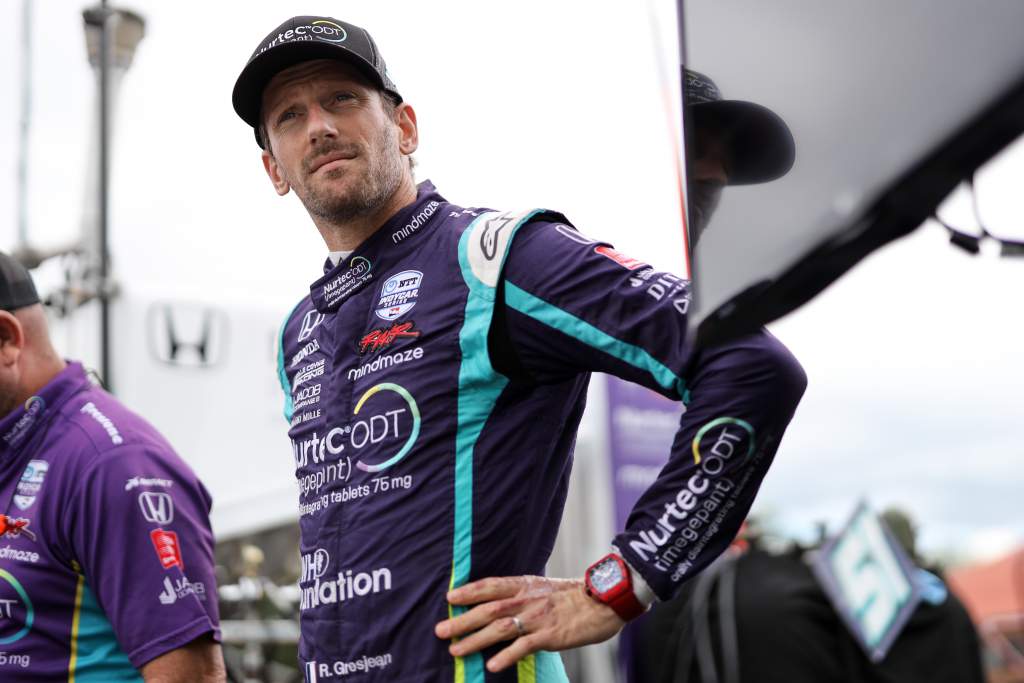
This is something that just becomes second nature after a bit of experience and when you’re doing something familiar.
But over 325 miles the challenge of just turning left in a hot cockpit – with g-forces constantly beating you up in the same place, with a spotter constantly telling you where other cars are and then you judging that information for yourself and also tracking strategies of other drivers and your own pace, remaining alert and in control – shouldn’t be underestimated.
Grosjean jumps in the IndyCar on a road course and while it’s different to F1, it’s not alien to what he’s been doing in the rest of his career and it’s not many more things to process mentally.
The Frenchman will be open to things going wrong just through trying to process more unfamiliar information, quickly. His computing power is going to be tested to the max.
This is truly getting out of your comfort zone and doing something new.
What are he and the team expecting?
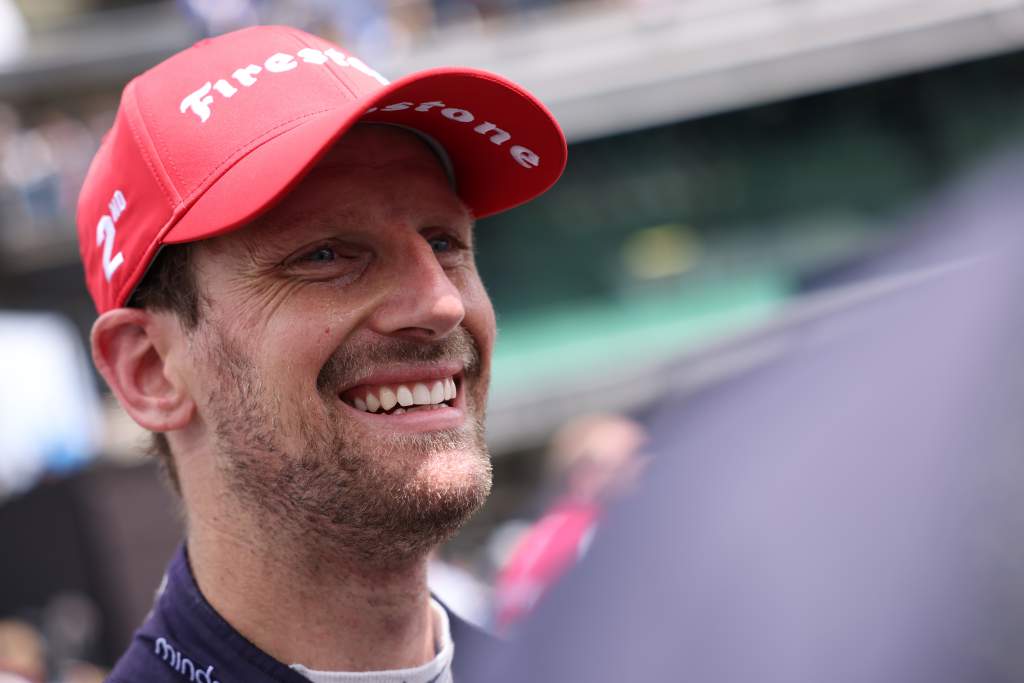
“I think Gateway, at the race, will be a big test for me, and we’re just gonna keep learning and keep improving,” said Grosjean.
“Because it is very different from everything I’ve done before.
“If anyone thinks just turning left and being flat out, and it’s easy, they must come on it and they will discover that it is very, very unique and requires some skills.
“It’s tough on qualifying, it’s two-lap average of [the] two laps that you get. You don’t have that much practice. So, I think the [test] day was very good but I feel – like before race one of the season – I’m not fully ready for it.
“I’m very much looking forward to it. It’s gonna be a great experience, great challenge and I think it can be really fun.”
Boisson added: “The first time on the oval, you can’t fully set a goal to finish like top five, top 10, whatever.
“On the oval it’s like, first you have to finish, because the more laps you have under your belt, the more you understand, and the better you’re going to get so that’s going to be the goal.
“But given how comfortable he got in the car, and in the end we found some things on the set-up that really helped him feeling comfortable, and looking at the steering trace and the data how at the end he was able to adjust the car through the tyre degradation, adjust the car within traffic.
“I think he learned a lot and the car on the race trim felt fairly comfortable so I think we have a decent race car for him to at least have something comfortable he can just do all the laps [with] and learn from there.
“Generally, if you do all the laps on the oval, you end up fairly well.”


